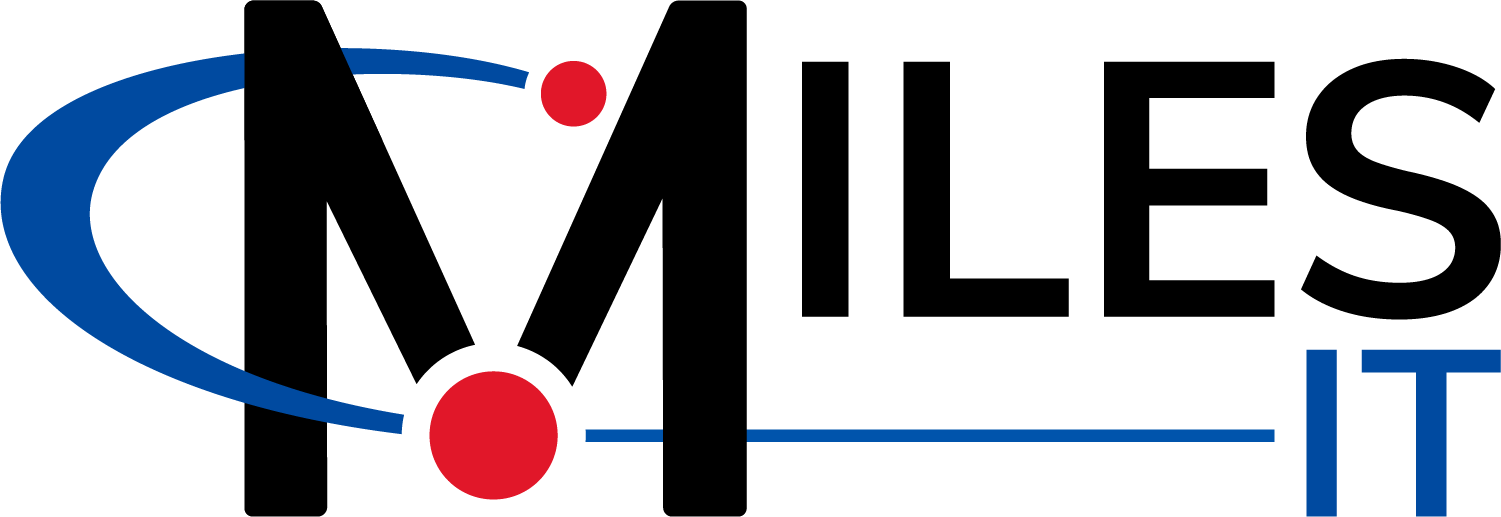Do you recognize the risks that may come when advancing your business systems?
Advancing your systems often means adding complexity. These additions may happen by adding or expanding systems, features, resources, and people needed to support them. Although complex technology environments have many consequences, like increased expenses and fewer insights, one of the most overlooked issues is heightened security risks. The more systems and complexity you have, the more opportunities for bad actors to access your data or cause disruptive attacks that significantly impact your operations, reputation, and bank account!
Having fewer, simpler, and streamlined systems—or systemplicity, as we call this at Miles IT—can significantly reduce your attack surface and the risk of vulnerabilities.
Wondering how to get started? Today, I’ll discuss ways that system complexity increases security risks and steps you can take to safeguard your environment.
How Do Companies Inadvertently Increase Their Security Risks?
There are three common ways that businesses can unintentionally open themselves up to security risks through complexity: by adding systems, adding people, and adding complexity.
Let’s explore each of these in more detail.
Adding Systems
The more business systems you have, the greater the attack surface.
An attack surface refers to the sum of the total access points or vulnerabilities in an organization’s environment that could be exploited to launch an attack. These points include software and applications, network interfaces, integrations, user accounts, and platform vulnerabilities. As you add systems, you increase the total potential access points somebody could exploit.
Consider a standard WordPress website. If your site has two plugins, you’ll have to verify that your site and the two plugins are up-to-date. However, if you have 20 plugins, you’ll have to monitor your site and each of those 20 plugins to ensure they are maintained and kept secure & up-to-date. As plugins are updated, it is essential to ensure each remains compatible with existing plugins. As you can imagine, this takes significantly more time and resources, creating additional security risks; we’ll discuss this more below.
Adding systems, plugins, and platforms expands the attack surface because there are more areas to monitor, secure, and support.
Shadow IT refers to the use of software or IT within an organization without authorization from the IT department. In these situations, company divisions add their own software or platforms to accomplish their goals, leaving the IT department in the dark.
When employees use their own applications of choice, there is little oversight and reduced protection from security threats. In addition to causing an increased attack surface, these systems may not adhere to good security practices, opening up threats for data exposure, compliance risks, or worse.
Adding People
The more team members you have, the harder it is to enforce security controls and ensure appropriate oversight and threat awareness.
Organizations add more IT staff and vendors as they add systems and complexity. Yet, adding more team members creates the opportunity for increased threats.
Consequently, it is important to have your staff and vendors follow appropriate security controls and standards.
Think about these scenarios.
With more people on your team, the potential for successful social engineering attacks grows. Remember that social engineering involves manipulation by bad actors; they trick users into making critical security errors or sharing sensitive information. Social engineering is key to successful phishing attacks.
It only takes one person to click a malicious link or download an infected attachment to put your entire company at risk.
If your company only consists of two people, training them to recognize and flag phishing emails and other suspicious activity is much simpler. With fewer people, you can efficiently conduct training, verify individual response actions, and evaluate each person’s security education level.
As your IT systems expand, you’ll likely rely on more people to ensure your teams follow appropriate security practices. It may be up to managers to properly train employees and oversee these controls. As more people are added into the mix, the risk of mistakes and threats increases if appropriate controls aren’t in place.
There are certainly upsides to having larger teams; with more people comes greater expertise, additional support, and new ideas. However, it’s also important to recognize and mitigate the adverse security risks associated with bigger teams.
Adding Complexity
Overly complex business systems also contribute to increased security risks for your business.
With increased system complexity comes additional work and costs to maintain security. These tasks and expenses need prioritization alongside other efforts.
Often, though, the more systems a business has, the less likely they are to ensure that everything is locked down. In reality, every business system, from your website to your CRM and Accounting system, needs to be monitored and follow best practices for security.
Another challenge is that “putting out fires” typically takes precedence over mitigating future problems that could occur. As a result, full and proper system security may not happen to the extent that it should, especially in highly complex environments. In some cases, partial solutions are implemented, which can create a false sense of security.
One example of a partial solution is using a single firewall to protect all business data and applications. If you keep your systems behind a firewall but fail to protect the systems themselves, you leave the door open to anyone who can get past that single layer of security.
Network firewalls are security devices that create a protective wall between your business network and the rest of the internet. Though firewalls are extremely helpful, they can be breached.
Consider this analogy. Say you have a precious item of value, like a rare diamond. You decide to keep the gem in a building for safekeeping and build a moat around it to keep unwanted visitors away.
You may think you don’t need anything else to protect the jewel, so you don’t bother to lock the doors or invest in a safe. However, all it would take was for someone to build a bridge and cross the moat to instantly gain access to your treasure.
A firewall works similarly; although it protects your network, you can’t get lulled into a false sense of security and follow lax security procedures. Since somebody could breach a firewall, it should not be your only source of protection.
How Can You reduce Risks Within Your Business Systems?
Taking decisive steps to improve your security can lower the risks associated with complex systems.
Prioritize Security
Follow best practices for security throughout your business. You can check out our security guide for tips on actions you can take right now, including maintaining offsite backups, implementing multi-factor authentication, and more.
If you don’t have in-house cyber security expertise, work with outside parties to ensure you configure and maintain your environments and systems securely.
Stay Up-to-Date
Ensure your business technologies are regularly updated, including operating systems, software and database technologies, coding languages, and plugins. Always patch and upgrade your systems consistently.
If you use SaaS software like Salesforce or NetSuite, you’ll typically rely on the vendor to perform security updates. Remember only to use SaaS applications that you can trust.
Security Testing
Perform scans that evaluate your systems and identify potential security issues.
An important note is that one type of scan won’t recognize all vulnerabilities; it’s necessary to combine a variety of tests to gain a complete picture of your security posture.
|
TYPE OF SCAN |
DESCRIPTION |
|---|---|
|
Network Scans |
Search for vulnerabilities within your network, including open ports. |
|
Web Application/Application Scans |
Evaluate applications to ensure there are no vulnerabilities within the software or the APIs, including the OWASP Top 10. Even if your application is located inside your network, it must be protected. |
|
Mobile Application Scans & Platform-Specific Scans |
Identify vulnerabilities within your mobile application or platforms like your WordPress or Magento site. |
|
Penetration Testing |
Demonstrates actual vulnerabilities in an application and how bad actors could use them to their advantage. We recommend pen tests for any organization that handles PII (Personally Identifiable Information), PHI (Personal Health Information), or other sensitive data. |
The right place to start depends on the types of systems and risks associated with your organization, along with your current security posture.
Overall, remember that you can’t complete one scan and move on. A single network scan won’t detect vulnerabilities within your web application, mobile app, or other platform.
Similarly, scanning your WordPress website won’t necessarily uncover issues within your network. And, with new vulnerabilities constantly being identified, it is crucial to test your systems regularly as well.
Regression Testing
Any time you build something new within your software system, there is always the risk of creating a vulnerability elsewhere in your system.
Most software systems have interconnected parts, and updates can cause propagating effects. As a result, you should reevaluate your security whenever you make changes to your systems.
We recommend completing regression testing, which reviews all possible sensitive or affected areas of a system when making changes.
Simplify
Simplification may seem like an obvious solution, but if adding complexity creates additional risk, simplifying your systems will reduce risk. You can create simpler systems through elimination, consolidation, standardization, and other simplifications of your business systems, people, and processes.
Moving Toward System Simplification
Complex business systems can cause a variety of challenges in your organization, and you shouldn’t ignore their associated security risks.
It’s essential to evaluate your attack surface, organizational security measures, and business systems to protect your data and teams.
Regularly performing relevant scans can help you assess system security and ensure nothing slips through the cracks.
Interested in receiving specific recommendations for your business on how to simplify your systems? Check out our System Simplification (Systemplicity) consulting service.


